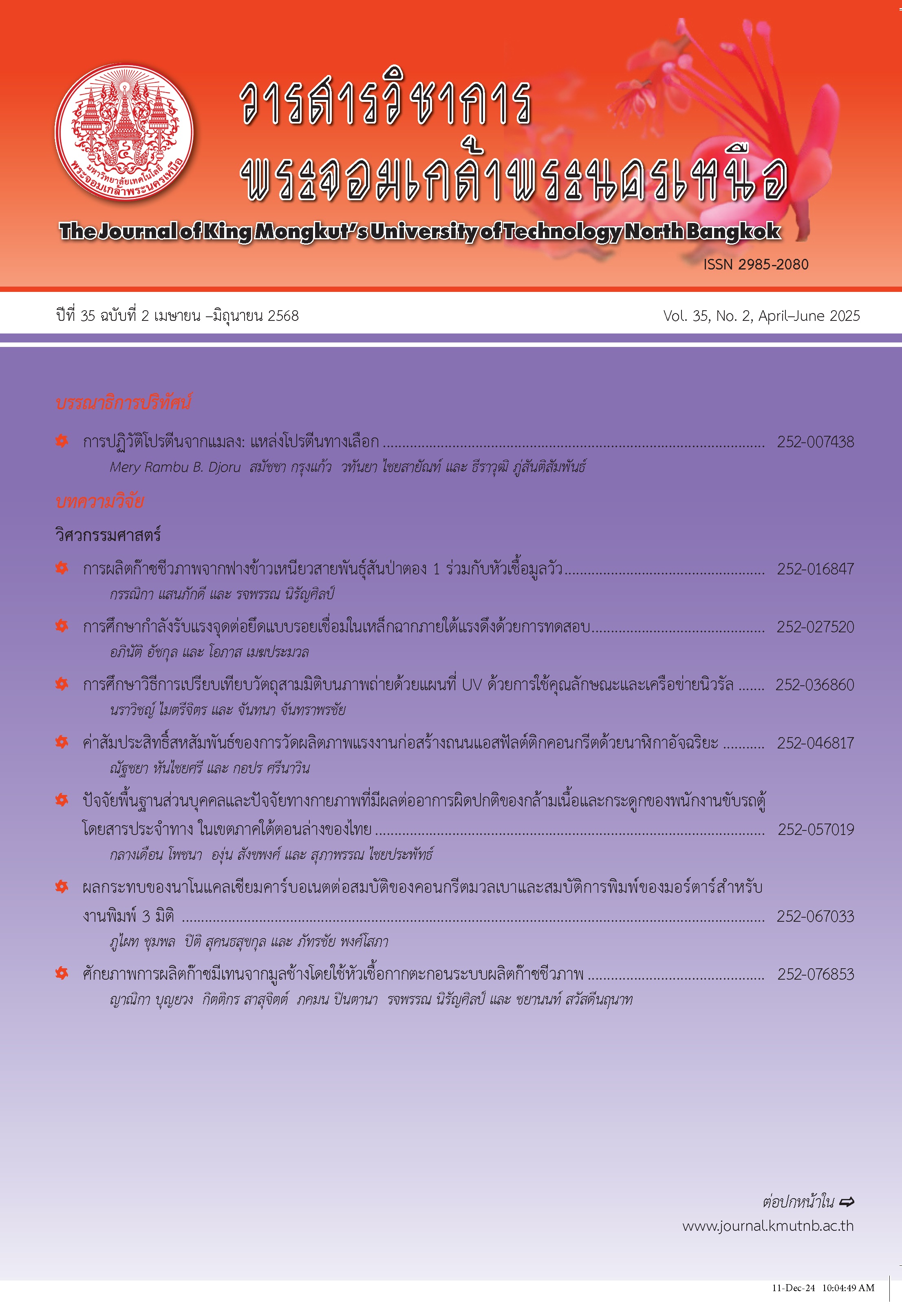Estimating Confidence Intervals for Appropriate Binomial Proportional Parameters in Different Situations
Main Article Content
Abstract
The objective of this research is to compare the performance of 95% interval estimation methods for binomial proportional parameters, namely the adjusted Wald method, the Geoffrey method, the Zhou-Li method, and the Kim-Jang method, using the criteria. Used to measure efficiency is to check the confidence coefficient at the 95% level and compare the average width of the confidence interval. Data were modeled using Monte Carlo techniques to have a binomial distribution with parameters n equal to 10, 20, 30, 70, 90, 100, 200, 500 and 1000 and p equal to 0.1, 0.2, 0.3, 0.4, 0.5, 0.6, 0.7, 0.8, and 0.9. A total of 81 situations were studied. The experiment was repeated 5000 times for each scenario. The research results found that The Geoffrey method performs well at almost all sample size levels and at almost all p parameters, except when the sample size is small and the p parameter approaches 0.5. The adaptive Wald method performs well. At all levels of sample size and p parameters ranging from 0.3 to 0.7, the Zhou-Li method has good performance. at all sample sizes and at almost all p parameters, except in the case where the sample size is equal to 10 at all p parameters. In addition, the Kim-Jang method performs well at almost all sample sizes and at almost all p parameters, except in the case of small sample sizes and where the parameters are Values 0.1 and 0.9
Article Details

This work is licensed under a Creative Commons Attribution-NonCommercial-NoDerivatives 4.0 International License.
The articles published are the opinion of the author only. The author is responsible for any legal consequences. That may arise from that article.
References
W. Bodhisuwan, “Statistical inference,” in Principles of Statistics, 1st ed. Bangkok: V.J. Printing Press, 2017, pp. 195–214 (in Thai).
K. Vanichbuncha, Statistical analysis, 8th ed. Bangkok: Chulalongkorn University Press, 2003 (in Thai).
N. Jongsangaklang, P. Ung, and P. Suksawang, “Approximate confidence interval for the difference binomial proportions with adjusted Newcombe hybrid score method,” Thai Science and Technology Journal, vol. 28, no. 12, pp. 2114–2127, 2020 (in Thai).
S. Visuttipitakul, Using statistics for process improvement, 1st ed. Bangkok: TISTR Press, 2002 (in Thai).
S. Khongkun, “A comparison of methods on interval estimation for the binomial parameter,” M.S. thesis, Department of Statistics, Faculty of Science, Kasetsart University, Bangkok, Thailand, 2003 (in Thai).
N. Tiplert, P. Wiboonjaroensri, M. Aomkratoom, I. Tanee, and J. Sinsomboonthong, “Efficiency comparison of the confidence intervals for estimation of a binomial proportion parameter,” Thai Science and Technology Journal, vol. 24, no. 5, pp. 706–716, 2016 (in Thai).
K. Kanhan, “Comparison of methods on interval estimation for the binomial proportion,”M.S.thesis,Department of Mathematics, Faculty of Science, Burapha University, Chonburi, Thailand, 2009 (in Thai).
K. Junsik and J. Woncheol, “A generalized Agresti-Coull type confidence interval for a binomial proportion,” Journal of Korean Statistical Society, vol. 51, pp. 356–377, 2022.
A. Agresti and B. A. Coull, “Approximate is better than exact for interval estimation of binomial proportions,” The American Statistician, vol. 52, no.2, pp. 119–126, 1998.
E.B. Wilson, “Probable inference, the law of succession, and statistical inference,” The American Statistical Association, vol. 22, pp. 209–212, 1927.
L.D. Brown, T.T Cai and A. Dasgupta, “Interval estimation for a binomial proportion,” Statistical Science, vol. 16, no. 2, pp. 101–133, 2001.
X.H. Zhou, C.M. Li and Z. Yang, “Improving interval estimation of binomial proportions,” Philos Transact of The Rayal Society A, vol. 366, no. 1874, pp. 2405–2418, 2008.

